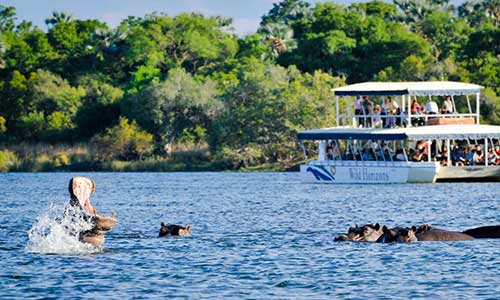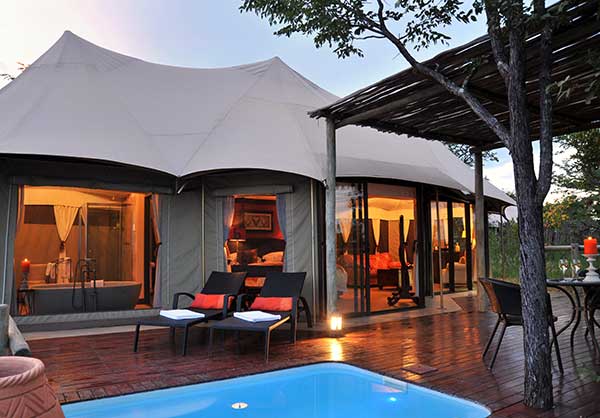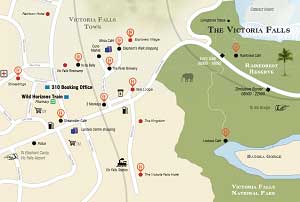Nov 15, 2016 | Author : Jess White, birding, twitching, Wild Horizons Activites, Wild Horizons Lookout

Anyone who has visited Victoria Falls, intends to visit Victoria Falls or has an interest in visiting this seventh wonder of the world will by now probably have heard of the increasingly popular Lookout Café. It is well known and popular for a number of reasons ….. its delicious food, its stunning location above the Batoka Gorge and its friendly staff to name but a few. Diners at the Lookout Café can observe adrenaline junkies flinging themselves off the gorge on one of the many Wild Horizons High Wire activities, watch the Zambezi River surging below or take in the magnificent spectacle of the Batoka Gorge. What many people don’t realize is that there is also a wonderful opportunity to see Verreaux’s Eagle (also known as the Black Eagle in Southern Africa). This is a great treat for anyone with even the slightest interest in ornithology. This very large eagle (the 6th longest in the world) can often be seen swooping and gliding over the craggy rocks of the gorge in search of hapless hyraxes.
To those who are not too familiar with this magnificent bird of prey, Verreaux’s Eagle is one of the most specialized species of raptors. These birds typically live in hilly and mountainous regions of Southern and Eastern Africa, including our very own Batoka Gorge. The distribution and life history of these birds revolve solely around its favorite food, rock hyraxes, or ‘dassies’ as they are known as locally. When hyrax populations decline Verraux’s Eagles have been known to survive with mixed results on on other species, but considering their highly specialized tastes they have survived the test of time exceptionally well in terms of keeping up their numbers! Their successful survival rate can also be attributed to the fact that they prefer to live in rugged and remote areas. Fortunately it is difficult for humans to destroy rocks and mountains and these areas are generally not favorable to humans so the areas in which these Eagles live have stayed relatively unchanged!
Unlike other eagles with their haunting cries, Verreaux’s Eagles are largely silent, giving no clue to their prey about their whereabouts. The first indication of the presence of one of these incredible Eagles is a flash of black or an ominous shadow cruising past in your peripheral vision. These birds will often hunt in low level flight and catch the rock hyraxes in a fast, twisting dive a few seconds after ‘surprising’ the hyrax. Interestingly, cooperative hunting has also been seen with one eagle in a pair flying past and distracting the prey while the other strikes from behind. ‘Dassies’ are so well camouflaged in their natural environment that we often all we see of them is a brief flash or fur but these Eagles can fly out and return with a kill in just a few minutes.
So the next time you are sitting and relaxing over a delicious meal at the Lookout Café bear in mind that you are in the heart of Verreaux Eagle country. Keep watch amongst the craggy rocks and in the lower levels of the gorge for this large black eagle with its trademark white ‘V’ mark on its back and listen for the silent whoosh of its enormous wings as it too seeks out its own specialized lunch! Written by Libby White
Nov 16, 2015 | Wild Horizons Activites
As the end of a very long and hot dry season, I am filled with anticipation at the thought of the upcoming rains and the abundance they will bring. This is my favourite time of the year- when the landscape is transformed and the animals drop their young when the skies darken with storm clouds and the ground turns green with new shoots.
The green season runs from November through to March and apart from being my favourite time of year the ‘Green Season’ as it is known is a fantastic time to visit Zimbabwe.
During the green season, most lodges offer lower prices- and travellers can have huge savings, especially on luxury lodges. Many also no longer charge a single supplement so if you are travelling solo the green season is the time to visit. For couples, there’s also the opportunity to spend the most romantic day of the year in one of the world’s most romantic locations. Take your loved one on a spectacular Zambezi cruise while the sun sets or cocoon yourself in the romantic suites at The Elephant Camp- with canopy beds, private plunge pools and large freestanding tubs with spectacular views the setting cannot be beaten.
Zimbabwe’s greatest attraction the Victoria Falls is at its Zenith around April but the waters start rising in February. At this time a breathtaking volume of water flows over them and clouds of spray rising hundreds of metres above. It is now that the reason behind its local name of ‘Mosi-oa-Tunya’ or the smoke that thunders becomes apparent. As you stand on the lip of the chasm the ground beneath your feet truly seems to tremble and it is impossible not to feel awed. The large amounts of spray driven up by the falling water also result in beautiful rainbows above the Victoria Falls.
The rainy season is typical of a tropical system with clouds building in the morning, usually resulting in an afternoon or evening downpour. These can clear up with the suddenness with which they begin- leaving you standing in dazzling sunshine moments after they end. The weather is still warm and the rains should not deter travellers. The dramatic cloud formations make the perfect backdrop for photography, adding drama to landscapes that are missing in southern Africa in the winter.
The green landscape, with its backdrop of clouds, is punctuated by riotous colour. These splashes of colour dart from tree to tree and are the vibrant plumages of the many bird species. Zimbabwe offers the best bird watching in the wet season from November to April. Migratory birds are present and all species are in full breeding plumage. For any serious birder this is a spectacular show and not to be missed.
I also find that the lower amount of travellers at this time of year adds to the experience- staff at hotels and restaurants are more attentive as they are quieter and you often get amazing experiences like being alone at a special game sighting. Try visiting Zimbabwe between February and March when you will truly discover the delights of the Green Season and the warmth of Zimbabwe’s hospitality.
For specials and rates in Victoria Falls, Chobe and Livingstone contact lodges@wildhorizons.co.zw
Sep 9, 2015 | birding, birding safari, twitching, Victoria Falls, Victoria Falls Activity, wildhorizons
We have recently had some great sightings of migratory species returning to the Zambezi Region for the summer. We are so lucky to get to see these beautiful birds and we thought the best way to share our luck with you was to compile an album of the birds we have seen this week alone! Thank you to Jeremiah Bondera, captain of The Zambezi Royal and keen birder for compiling this list! Without further ado:
 Long Crested Eagle
Long Crested Eagle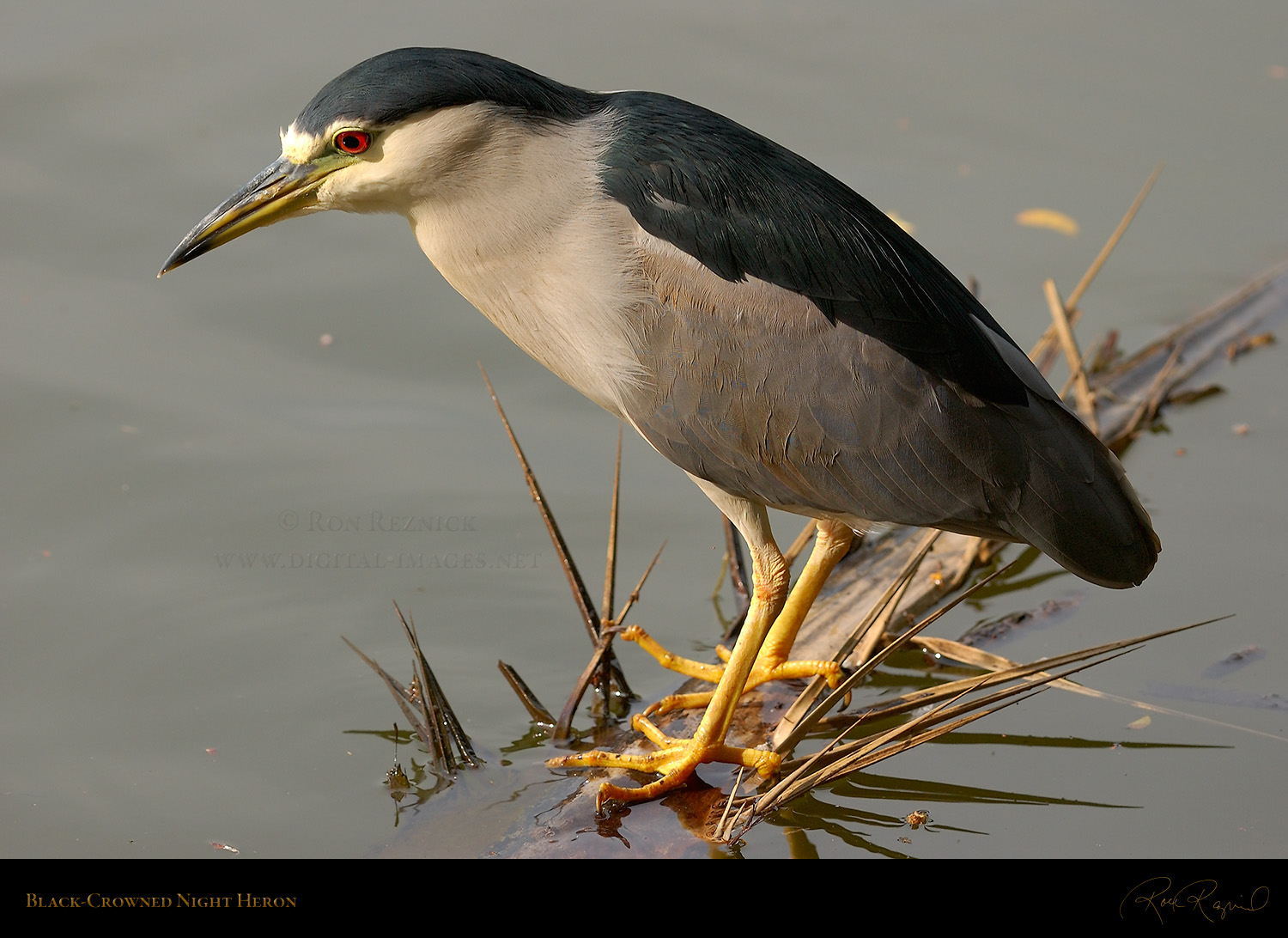 Black Crowned Night Heron
Black Crowned Night Heron
 Hooded Vulture
Hooded Vulture
 Black Winged Stilt
Black Winged Stilt
 Yellow Billed Stork
Yellow Billed Stork
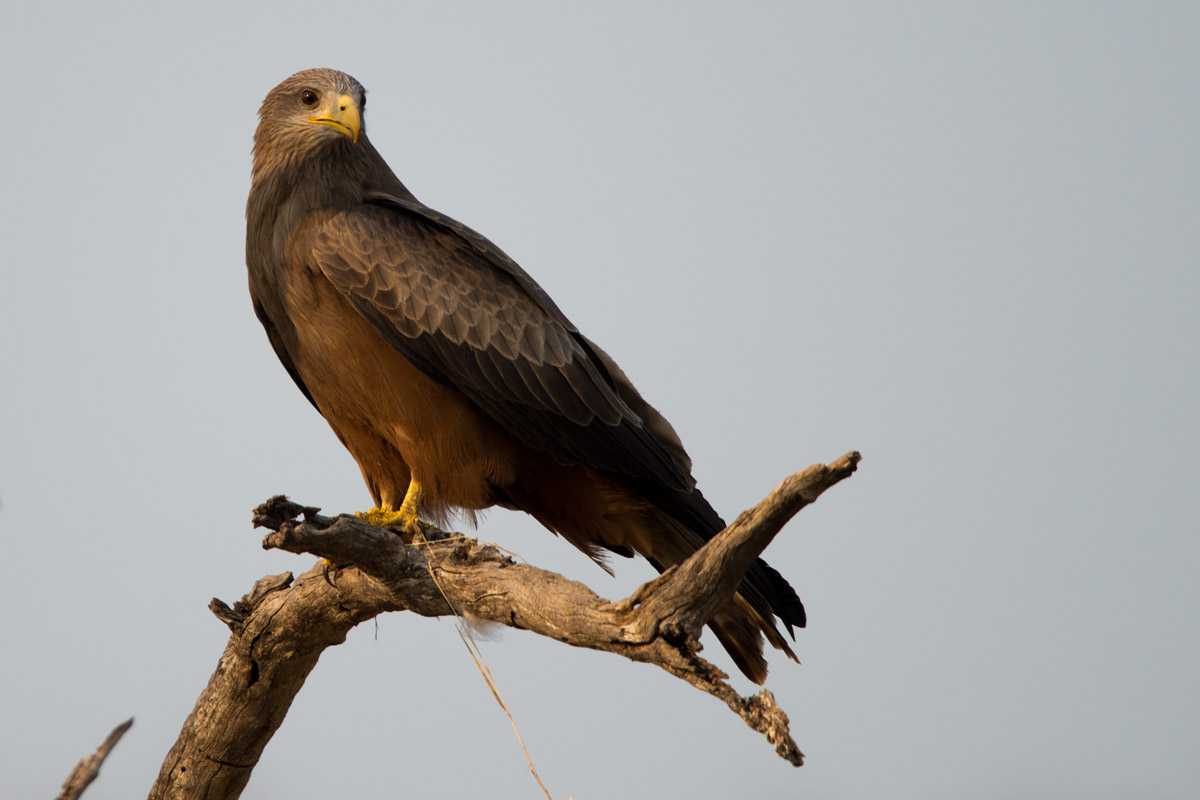 Yellow Billed Kite
Yellow Billed Kite
Aug 17, 2015 | Uncategorized
I recently had the opportunity to go on a Chobe Day Trip from Victoria Falls (It can also be taken from Livingstone). This tour departs daily to the spectacular and game-filled Chobe National Park in Botswana. You are collected early- around 7 am and transferred to the Botswana border. Here we were met by our Botswana Guide. We went straight to the Chobe river for a cruise. The wildlife watching on this cruise can only be described as truly exceptional! We returned to shore at 12:30 for an hour of lunch (a great buffet that I over-indulged in!) before we departed- this time in a vehicle to see the park by land. The Chobe landscape and sheer number of animals is amazing. Some experiences are hard to put into words so I have put together a gallery of this must-do. After our game drive,we were taken back to the border for our return transfer to Victoria Falls.
TIPS & TRICKS:
- This is a long and exciting day so I suggest taking a snack bar for the morning if it’s too early for you to eat before departure. You will arrive back around 18:30 (6:30 pm)
- Drinks are provided through-out so don’t worry about staying hydrated
- Sunscreen is a must! It can be very warm in the afternoon.
- Dress comfortably and with layers you can easily peel off as the day warms.
- Charge your camera batteries and empty your memory cards! This trip is a photographer’s dream!
- You can also do this trip as a half day- either the boat cruise or the game drive departing in the morning or afternoon. My pick would be the boat cruise- there’s something very special about it.
- For more information see here.
Jun 20, 2015 | birding, birding safari, Sunset Cruise, twitching, Zambezi river, Zambezi River Cruise, Zambezi Royal
We arrive at The Wild Horizons jetty to the mesmerising sound of African voices harmonising over water. A group of men, dressed in traditional skins are singing and dancing. The sound is beautiful as we make our way up the path and onto the jetty and boat. We are greeted by name and helped aboard where we are offered a glass of bubbly. The boat is a study in understated luxury. A open plan single-story it is decorated in tasteful neutrals, and has plush seating at intimate tables of four. My dining partner and I take a seat and begin to take in our surrounds. The Zambezi is beautiful. It stretches glass like in the evening light, with palm islands adorning it and the sounds of the singer’s voices carrying over the water.
We take off, soon after being seated, and are given a short introduction and safety briefing by our captain, Jeremiah. It is immediately apparent we are in knowledgeable hands, as he orients us to our surrounds and points out many facts about the Zambezi. He is a calmly capable man, quietly answering all the guests’ queries with a smile.
 |
| Guests Photograph a Crocodile on the Banks of the Zambezi. Image Sarah Kerr. |
The first of many well-portioned hors-d’oeuvres arrives as we bask in our surrounds and we are offered a drink from the cocktail menu. The food and beverages flow faultlessly throughout the cruise- the service is such that you never feel crowded yet also never find yourself wanting. Plate after plate of delicacies arrive- from crocodile croquettes to cheese selections, and you are free to order from the generous bar selection and cocktail menu.
 |
| Friendly Service aboard the Zambezi Royal. Image Sarah Kerr. |
As we cruise upstream Jeremiah points out the many birds to be seen along the river and turns out be the outstanding feature of the cruise. As we glide along we see Open billed stork’s dextrously removing snails from their shell, White backed vultures swirling overhead, Cormorants and Darters preening, Egyptian Geese honking obnoxiously, the predatory swoop of the African Harrier-Hawk, the whistling of White-Faced Ducks and so much more. The boat is effortlessly steered for the best sightings and all of this adds to the background ambience and the feel of the river.
We see larger creatures too. Hippopotami surface and crocodiles bask like oversized lizards on small islands, making for great photo opportunities. Then there is the special time we spend watching a family of elephants quietly come down to quench their thirst. They are unperturbed and we feel lucky to witness their interactions. Yet it is still the birds that most stand out; their abundance and variety is truly exceptional. As we make our way homeward, content and with sated bellies, Jeremiah mentions in his characteristically understand manner that there is an African fin foot up ahead and to our right.
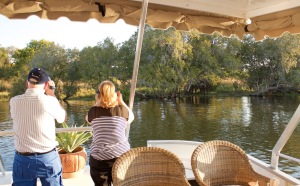 |
| Watching a herd of Elephants from the Zambezi Royal. Image Sarah Kerr. |
You can hear the intake of breath by the two South African birders who accompany us. For them this bird is a ‘lifer’. A goal they have been seeking for years and never attained. Because these birds are so highly secretive they are rarely seen by even experienced ornithologists and little is known about their habits or even their conservation status. We all peer unconvinced at the spot Jeremiah has pointed out to us. Where a tree’s branches reach the water in a confused tangle approximately 200 metres ahead. As he steers us closer we all squint and murmur ‘to the right’, ‘no, that’s not it’, ‘is that a log?’, ‘there’s nothing there!’… Until finally a gap in the foliage provides the glimpse we have been seeking. A small, pretty bird peers back at us before erupting from the tree and taking off downstream. This provides us with a beautiful view of the characteristic orange feet and bill and leaves us all with a sense of awe and gratitude.
Our fellow passengers are beside themselves with joy and we make our way back with smiles on our faces, knowing we have seen something that few people ever get to.
What we saw: Reed Cormorant, African Darter, Green-Backed Heron, Hamerkop, African Open- Billed Storks, Hadeda Ibises, White Faced ‘Whistling’ Ducks, Egyptian Geese, Spur Winged Geese, White backed Vultures, African Harrier Hawk (Gymnogene), African Fin Foot, African Jacana, African Wattled Lapwing, Pied Kingfisher, Giant Kingfisher, Brown-Hooded Kingfisher, White fronted Bee-Eaters and African Pied Wagtail.
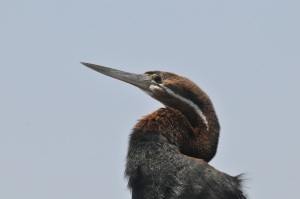 |
| African Darter (Anhinga rufa). Image Jane Bettenay |
(more…)

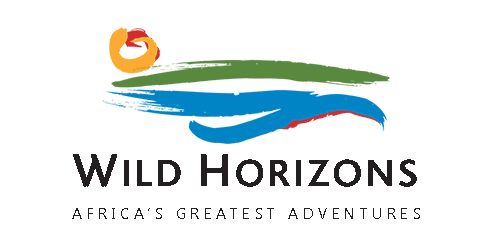
 Long Crested Eagle
Long Crested Eagle Black Crowned Night Heron
Black Crowned Night Heron Hooded Vulture
Hooded Vulture Black Winged Stilt
Black Winged Stilt Yellow Billed Kite
Yellow Billed Kite



